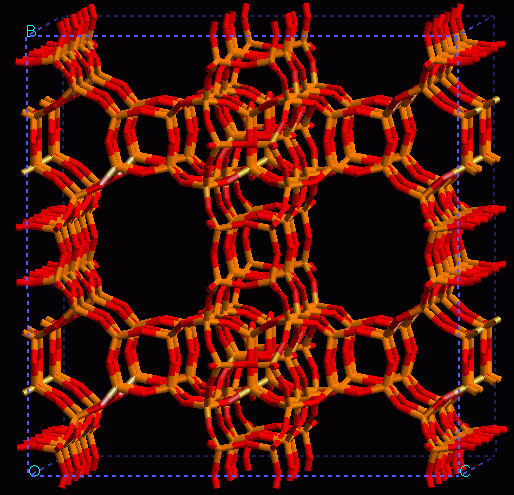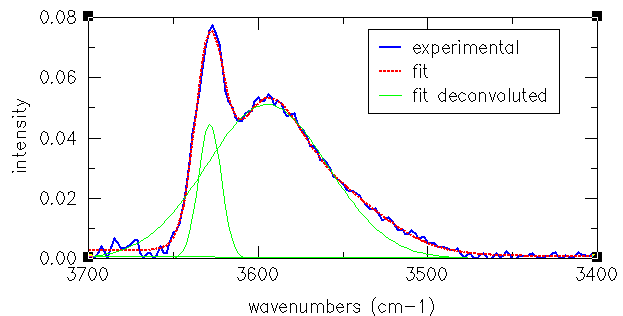
View of ITQ-7 zeolite (whose IZA code is ISV)
In a purely siliceous structure an Aluminium atom has been introduced in each of the
crystallographic T-sites, and for each of them the four bridging protons have been
considered. A model like that was not able to reproduce the experimental infrared
spectrum for ITQ-7. When the template was considered into the structure, the Aluminium
distributions changed dramatically their relative stability. Considering first the
Al incorporation (with the template) and then -second- the proton incorporation,
the populations of the acid centres were recalculated and from that the infrared
calculated bands were recalculated. The resultant comparison with experiments shows
a much better agreement and it can be seen that both infrared bands are reproduced by our
calculations as well as their relative populations.

Experimental infrared bands of H-ITQ-7. The deconvolution of the experimental is also shown. The calculations give two bands of 3577 and 3624 wavenumbers, in close agreement with the experimental at 3595 and 3624.